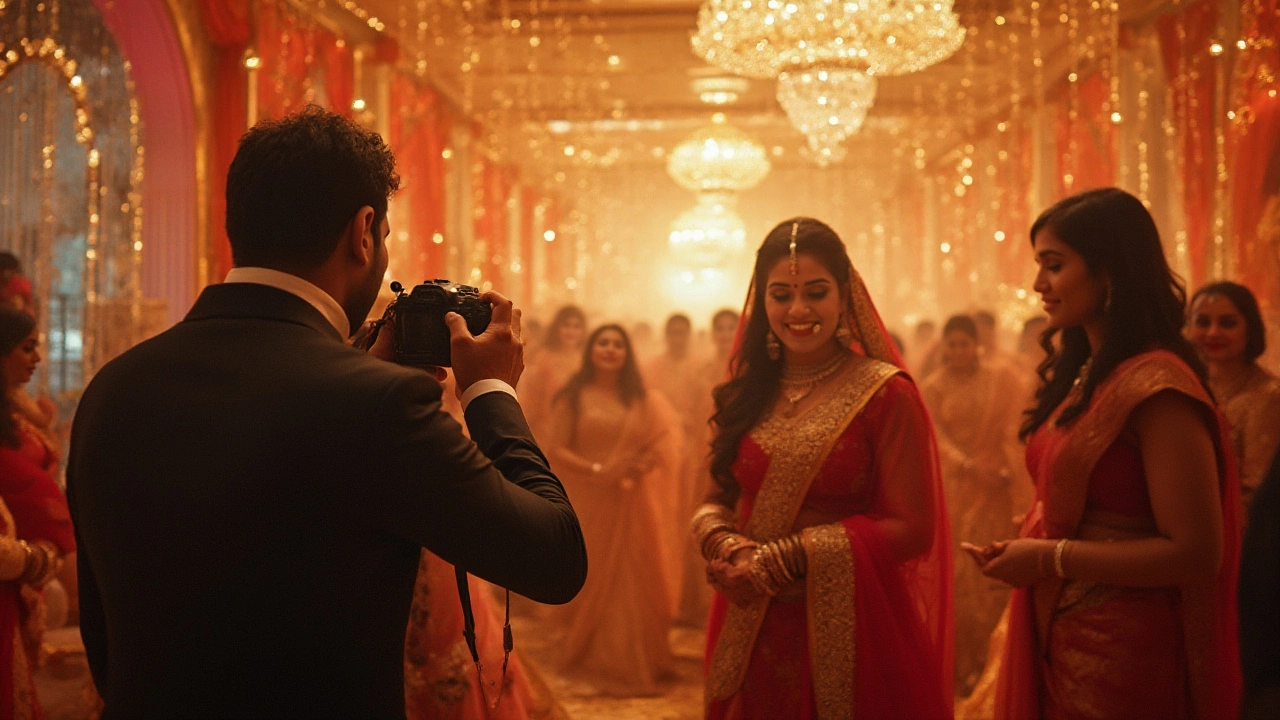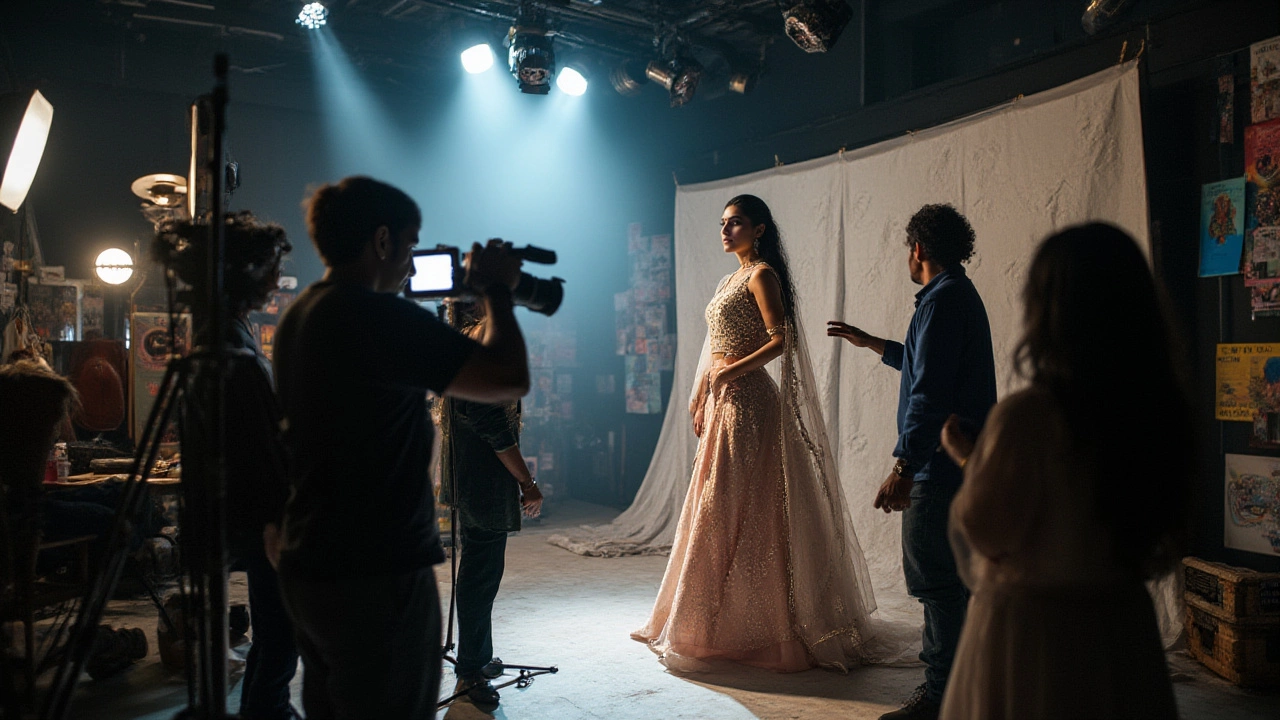Top High-Paying Photography Jobs: Which Niche Pays the Most?
 Jul, 11 2025
Jul, 11 2025
So, you want to make real money from photography? The dream isn’t just about capturing sunsets or candid laughter; it’s about seeing numbers in your bank account that make your mates do a double take. Not every photography gig will fatten your wallet. Some shoots pay just enough to cover your lens cleaning kit, while others cover your next international holiday. What makes the difference? Let’s break down what pays, what doesn’t, and why.
The Big Earners: What Type of Photography Actually Pays the Most?
Let’s break the fantasy: The ‘starving artist’ story only fits if you ignore some downright lucrative corners of photography. The top-paying jobs aren’t always the most glamorous (though sometimes they are) but they’re the most profitable. When you hunt for high-paying photography jobs, three clear winners keep showing up: commercial photography, specialised advertising, and luxury event photography. Here’s the real talk—commercial photography usually claims the top spot.
Why commercial? Big brands drop huge checks for campaign images. They want images nobody else has, and they pay for exclusivity. Think perfume ads, fashion brands in glossy magazines, or those massive billboard shoots in London and New York. These gigs can land you £5,000 to over £20,000 per shoot, especially if you’re part of a bigger agency. According to the UK’s Association of Photographers (AOP) 2024 survey, top agency commercial shooters clear an average of £78,000 a year, with many topping £100k if they snag international contracts. But it’s not only about the upfront fee—usage rights, licensing, and residuals can sweeten the deal for years.
Next on the money ladder: specialised advertising photography. This niche sits close to commercial, but often means shooting very specific products—think Aston Martin’s latest car, or tech gadgets for Apple’s European ad launch. Advertisers pay extra for creative control and technical perfection, demanding everything from complex lighting to expert retouching. Top shooters in this world pocket about £50,000-£90,000 a year. Some single ad projects hit six-figure totals, especially in the car, tech, or luxury goods markets.
Don’t ignore luxury event photography—think high-profile weddings, celebrity soirees, and corporate galas in Chelsea or Dubai. Photographers focused on these events can charge £10,000-£40,000 per wedding, especially when they’re exclusive and destination-based. Some earn more in a weekend than others do in a month.
Let’s bring in a few more names. Architectural photographers working on international projects do surprisingly well, with top-tier earning potential at £50,000-£120,000 a year. Sports photographers attached to big teams or agencies (like Getty or AP) can bill over £2,000 a day at major events—think Wimbledon or Premier League matches.
But here’s the kicker—high pay in these sectors isn’t about chance. It’s about building a tight portfolio, knowing the right clients, and understanding how to negotiate licensing rights for your images. Nobody’s walking in from the street into a six-figure contract, but with the right approach, those deals are out there.
| Photography Type | Typical UK Day Rate | Annual Earnings (Top Tier) |
|---|---|---|
| Commercial Photography | £800–£3,000 | £100k+ |
| Advertising Photography | £1,000–£4,000 | £90k+ |
| Luxury Wedding/Event | £2,000–£10,000 | £120k+ |
| Architectural/Real Estate | £500–£2,000 | £120k |
| Sports (Agency-Based) | £1,000–£2,500 | £70k-£150k |
Why Personal Branding and Licensing Make All the Difference
Ever wondered why two photographers can shoot the same style, use the same camera, but end up with wildly different paychecks? Welcome to the world of personal branding and licensing. The biggest cash comes not just from the shoot, but from selling your name and controlling what happens to your pictures.
First, let’s unpack branding. Top earners in commercial and advertising photography aren’t just good—they know how to sell ‘themselves’ as the solution a client is craving. Their Instagram profiles are polished. Their websites ooze professionalism. They get their work in industry journals, get featured in exhibitions, and network with art buyers and creative directors. Suddenly a day’s work can double in value because you’re ‘that guy’ clients trust with big campaigns.
Licensing is where the real money tricks in. If your image lands on a giant billboard, that’s not a one-time fee. That’s licensing, and it pays every time the image is reused. For example, London-based photographer Sarah M. reportedly made over £50,000 from one soda advert—mainly from yearly renewal fees and territorial extensions. Always negotiate usage rights. If you sign away your copyright for a flat fee, you’ll miss out on all the times your image pops up again on websites, magazines, or future ads.
Want a hack? Always clarify with clients what they actually need. Some just need a photo for their website banner (low usage, smaller fee). Some want worldwide exclusive use (much higher price!). Use simple online photography contract templates, and get everything in writing. Nothing spoils a payday faster than your favourite shot going global—with you seeing none of the profits.
Branding isn’t about faking it either. Enter photography competitions, post your behind-the-scenes process online, and reach out to mentors who already shoot at the top level. The biggest careers are usually built on both relationships and reputation. Over time, brands and agencies will pay not just for your image, but for the trust that comes with your name.

Niche Markets That Quietly Out-Earn the Rest
It’s easy to think landscape or portrait photography is where the money is—especially with Instagram full of jaw-dropping travel posts. But it’s the unglamorous, niche markets that quietly rake in serious cash, and barely anyone talks about them outside of pro circles.
Medical and scientific photography, for example, isn’t usually what first comes to mind. But NHS Trusts, pharma companies, and educational institutions regularly advertise roles starting at £30,000, with experienced pros reaching £60,000 or more. Some pharmaceutical shoots for European-wide campaigns go much higher—particularly when you hold the know-how in post-production (think retouching microscopic images). Industrial photography, focusing on factories, machinery, and construction, is another solid payer. Clients care more about accuracy than ‘artistry’, and repeat contracts for updates mean steady work year-round.
Then there’s legal and forensic photography. Some UK police forces and insurance firms contract expert photographers for crime scene re-creations or evidence documentation—often on a retainer. While less glamorous, the pay can reach £40,000-£70,000, and the demand doesn’t fluctuate like seasonal event photography.
Product photography in the e-commerce world is another sleeper hit. Go on Amazon or ASOS and imagine every item needing a clean, perfect image. Big online retailers often hire freelance teams, paying £20 to £100 per product, and when you scale that to hundreds or thousands of products, earnings pile up fast.
Food photography, especially for hospitality chains or supermarkets, has been seeing a boom. It’s less about fine dining, more about getting a chicken salad to look mouthwatering for Tesco’s next magazine insert. Magazine day rates for top food photographers land at £700–£2,000, with annual contracts hitting £70,000+ if you bag a chain as a regular client.
Smart Tips for Breaking Into High-Paying Photography
So, you know where the cash flows—but how do you get a slice? Breaking into high-paying photography niches demands more than good gear. Here are some human-verified, workable steps.
- Focus Your Portfolio: Tailor it for the jobs you want. If you crave luxury weddings, showcase only your best glamorous event photos. Targeting advertising? Show full campaigns, not just random images.
- Network Where Your Clients Hang Out: LinkedIn isn’t just for office jobs—use it to connect with creative directors, producers, and agency staff. Go to trade trade shows and gallery openings, even if you just show up for the free snacks. Connections matter.
- Master Usage Rights: Always discuss and negotiate how your images will be used. Don’t give away rights unless you’re paid big for it. Unused or under-priced images are missed income.
- Keep Skills Fresh: Take short courses in lighting, retouching, or video. Skills like 360-degree product photography or drone operation can help you snag special assignments that pay extra.
- Deliver Consistently: There’s a saying around pro circles: "You’re only as good as your last shoot." Deliver, follow up, and ask for referrals. High-paying jobs come to those seen as reliable.
- Don’t Ignore Agencies: The best-paying clients often go through agencies for peace of mind. Partner with one to get in front of corporate or international clients—just read the fine print about commission structures.
- Use Social Proof: Feature testimonials, awards, and big-brand logos you’ve worked with on your portfolio site. It’s not bragging, it’s giving buyers confidence.
Breaking into the top 5% of the photography pay scale won’t happen overnight, but the roadmap is out there. Mix smart branding, technical skill, and tight client relationships, and you’ll start seeing the kind of figures commercial photographers love to post about online. Sure, there’s competition, but even in today’s sea of smartphone shooters, the biggest cheques still go to those who understand their value and aren’t afraid to chase it—camera strap, contract, and all.